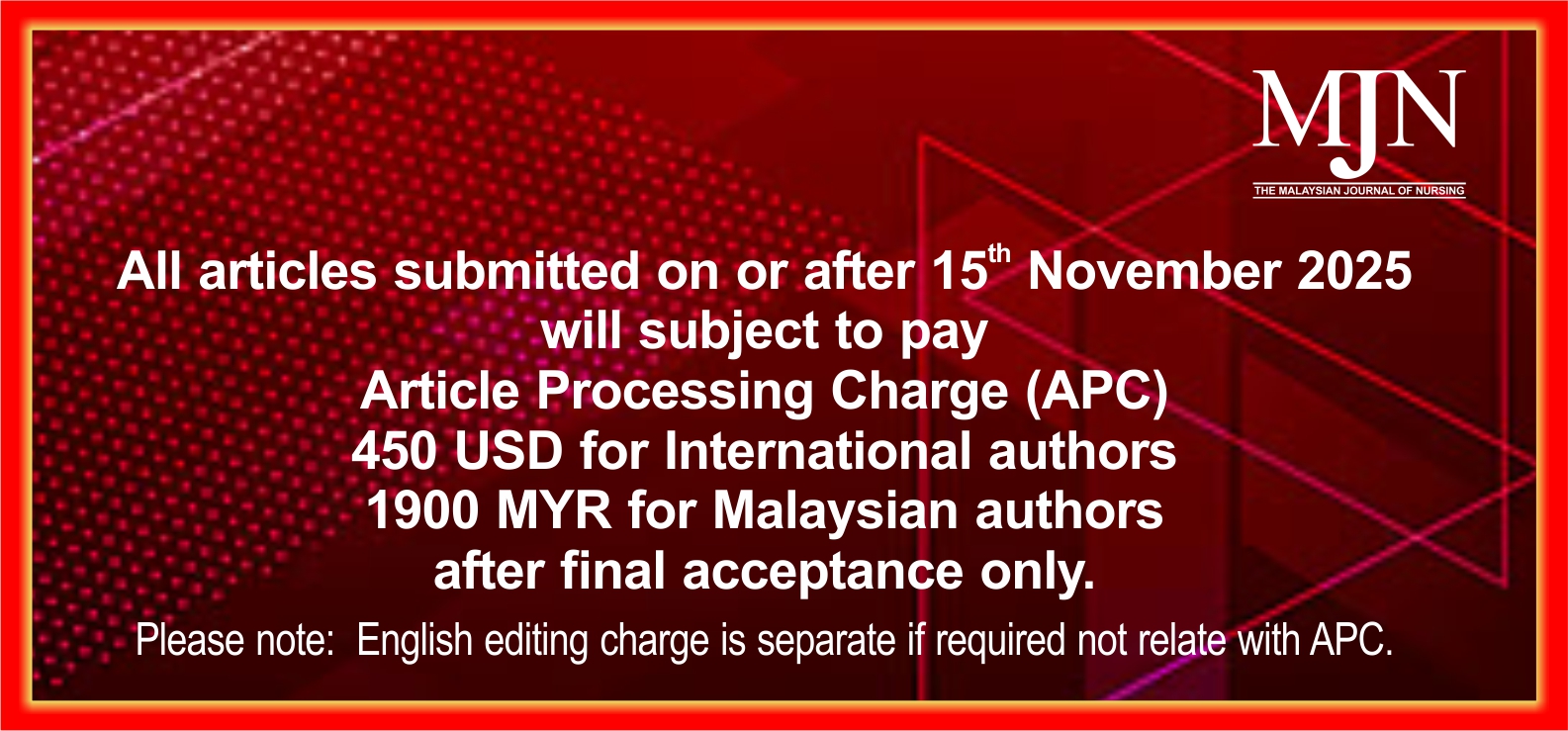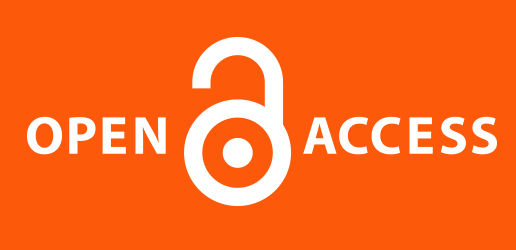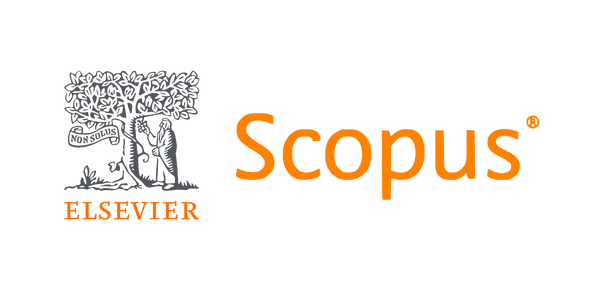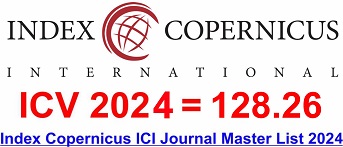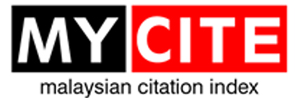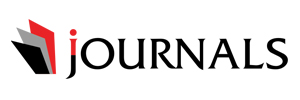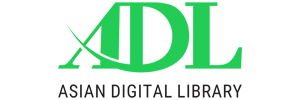Communication Accommodation between Nurses and Patients in a Medical Tourism Hospital in Malaysia
DOI:
https://doi.org/10.31674/mjn.2025.v16i04.015Abstract
Background: As frontline healthcare providers, nurses must communicate effectively with patients. Miscommunication in nurse-patient interactions often leads to heightened stress, anxiety, and dissatisfaction for both parties. Miscommunication may lead to misdiagnosis, mistreatment, and medical errors. Communication errors are likely to increase when nurses and patients communicate in their weaker language (L2) or when even one of the speakers uses a weaker language (L2). This study uses the Communication Accommodation Theory (CAT) to understand the adjustments made by Malaysian ESL/EFL nurses and foreign L1/L2 English-speaking patients seeking treatment in Malaysia. This study investigates the English language challenges of Malaysian English as a Second Language/English as Foreign Language (ESL/EFL) nurses interacting with foreign L1/L2 English-speaking patients and how they would accommodate their communication in English. Methods: A total of 432 ESL/EFL nurses from a Medical Tourism-Oriented Hospital participated in an online questionnaire. This study employed a quantitative research design to examine English language challenges and communication accommodation strategies among Malaysian ESL/EFL nurses in a Medical Tourism-Oriented Hospital. Data were collected via an online questionnaire from March 1–7, 2019 and analysed using IBM SPSS Version 24. Results: The findings indicated that the nurse had problems communicating in English. The nurses needed help understanding the foreign English pronunciation voicing out in English and were unsure of the correct English words to use in the interaction. The nurses prefer to use Malay to express themselves when interacting with foreign L1/L2 English-speaking patients. Most nurses immediately use hand and non-verbal gestures when they face difficulties communicating in English. Conclusion: The nurses adapted their communication styles when interacting in English. Nevertheless, the nurses changed their communication behaviour to foster mutual understanding, demonstrating that individuals naturally find ways to communicate effectively.
Keywords:
Communication Accommodation Theory, Medical Interaction, Nurse-Patient Interaction, SociolinguisticsDownloads
References
Aman, A. S. (2022, July 14). Healthcare sector to benefit from medical tourism recovery, says HILB Research. New Straits Times. Retrieved from: https://www.nst.com.my/business/2022/07/813297/healthcare-sector-benefit-medical-tourism-recovery-says-hlib-research . Accessed on 19th July, 2024.
Atefi, N., Abdullah, K. L., Wong, L. P., & Mazlom, R. (2014). Factors influencing registered nurses perception of their overall job satisfaction: A qualitative study. International Nursing Review, 61(3), 352-360. https://doi.org/10.1111/inr.12112
Baker, S. C., & Watson, B. M. (2015). How patients perceive their doctors’ communication: Implications for patient willingness to communicate. Journal of Language and Social Psychology, 34(6), 621-639. https://doi.org/10.1177/0261927X15587015
Barlow, M., Watson, B., Jones, E., Maccallum, F., & Morse, K. J. (2023). The influence of professional identity on how the receiver receives and responds to a speaking up message: a cross-sectional study. BMC Nursing, 22(1). https://doi.org/doi.org/10.1186/s12912-023-01178-z
Barón-Birchenall, L. (2023). Phonetic accommodation during conversational interactions: an overview. Revista Guillermo de Ockham, 21(2), 493-517. https://doi.org/10.21500/22563202.6150
Brouwer, E., Driessen, E., Mamat, N. H., Nadarajah, V. D., Somodi, K., & Frambach, J. (2020). Educating universal professionals or global physicians? A multi-centre study of international medical programmes design. Medical Teacher, 42(2), 221-227. https://doi.org/10.1080/0142159X.2019.1676885
Chan, S. M. H., Mamat, N. H., & Nadarajah, V. D. (2022). Mind your language: the importance of english language skills in an International Medical Programme (IMP). BMC Medical Education, 22(1). https://doi.org/10.1186/s12909-022-03481-w
Chinna, K., & Karuthan, A. (2020). Communication accommodation in healthcare provider-patient exchange. ASM Science Journal, 127–130. Retrieved from: https://www.akademisains.gov.my/asmsj/article/communication-accommodation-in-healthcare-provider-patient-exchange/. Accessed on 19th January, 2024.
Creswell, J. W., & Creswell, J. D. (2022). Research Design: Qualitative, Quantitative, and Mixed Methods Approaches (6th ed.). SAGE Publications, UK. Retrieved from: https://uk.sagepub.com/en-gb/eur/research-design/book270550 . Accessed on 23rd February, 2024.
Denes, A., Gasiorek, J., & Giles, H. (2016). “Don’t touch that dial”: Accommodating musical preferences in interpersonal relationships. Psychology of Music, 44(5), 1193-1201. https://doi.org/10.1177/0305735615609799
Dragojevic, M., Gasiorek, J., & Giles, H. (2016). Accommodative strategies as core of the theory. Communication accommodation theory: Negotiating Personal Relationships and Social Identities Across Contexts, 1(1), 36-59. https://doi.org/10.1017/CBO9781316226537.003
Farzadnia, S., & Giles, H. (2015). Patient-provider interaction: A communication accommodation theory perspective. International Journal of Society, Culture & Language, 3(2), 17-34. Retrieved from: https://www.ijscl.com/article_12768_2e0a7c7fec5a59eee3901cecf53020ad.pdf . Accessed on 20th February, 2024.
Fatahi, N., Mattsson, B., Lundgren, S. M., & Hellström, M. (2010). Nurse radiographers’ experiences of communication with patients who do not speak the native language. Journal of Advanced Nursing, 66(4), 774-783. https://doi.org/10.1111/j.1365-2648.2009.05236.x
Fetscherin, M., & Stephano, R. -M. (2016). The medical tourism index: Scale development and validation. Tourism Management, 52, 539-556. https://doi.org/10.1016/j.tourman.2015.08.010
Forsgren, E., Skott, C., Hartelius, L., & Saldert, C. (2016). Communicative barriers and resources in nursing homes from the enrolled nurses’ perspective: A qualitative interview study. International Journal of Nursing Studies, 54, 112–121. https://doi.org/10.1016/j.ijnurstu.2015.05.006
Gasiorek, J., & Giles, H. (2013). Accommodating the interaction dynamics of conflict management. Iranian Journal of Society, Culture & Language, 1(1), 10–21. Retrieved from: https://www.ijscl.com/article_1801_53de316ff936866a690762f507e53cb8.pdf. Accessed on 26th February, 2024.
Giles, H. (Ed.). (2016). Communication accommodation theory: Negotiating personal relationships and social identities across contexts. Cambridge University Press. https://doi.org/10.1017/CBO9781316226537
Giles, H., & Powesland, P. F. (1975). Speech style and social evaluation. Academic Press, US. https://doi.org/10.1002/ejsp.2420100113
Giles, H., Edwards, A. L., & Walther, J. B. (2023). Communication accommodation theory: Past accomplishments, current trends, and future prospects. Language Sciences, 99. https://doi.org/10.1016/j.langsci.2023.101571
Hewett, D. G., Watson, B. M., & Gallois, C. (2015). Communication between hospital doctors: Underaccommodation and interpretability. Language & Communication, 41, 71-83. https://doi.org/10.1016/j.langcom.2014.10.007
Hull, M. (2016). Medical language proficiency: A discussion of interprofessional language competencies and potential for patient risk. International Journal of Nursing Studies, 54, 158-172. https://doi.org/10.1016/j.ijnurstu.2015.02.015
Ishak, W. I., & Rafik-Galea, S. (2015). Speech accommodation strategies in the selling of life insurance. Pertanika, Journal of Social Sciences & Humanities, 231, 143-157. Retrieved from: http://www.pertanika.upm.edu.my/resources/files/Pertanika%20PAPERS/JSSH%20Vol.%2023%20(S)%20Dec.%202015/11%20JSSH(S)-0066-2015.pdf. Accessed on 6th February, 2024.
Jones, L., Woodhouse, D., & Rowe, J. (2007). Effective nurse parent communication: A study of parents’ perceptions in the NICU environment. Patient Education and Counseling, 69(1-3), 206-212. https://doi.org/10.1016/j.pec.2007.08.014
Karuthan, A., Kaur, S., Krishnan, K., & Lim Abdullah, K. (2020). Communication accommodation: Do nurses and patients speak the same language? ASM Science Journal, 13(Special Issue 5), 175–182. Retrieved from: https://www.akademisains.gov.my/asmsj/article/communication-accommodation-do-nurses-and-patients-speak-the-same-language/. Accessed on 8th January, 2024.
Kullberg, A., Sharp, L., Johansson, H., & Bergenmar, M. (2015). Information exchange in oncological inpatient care–Patient satisfaction, participation, and safety. European Journal of Oncology Nursing, 19(2), 142-147. https://doi.org/10.1016/j.ejon.2014.10.005
Lukitasari, R., Wulandani, N. L. K. L., & Putra, I. M. A. P. (2024). Cross-cultural communication between local people and foreign tourists in Bongan Tourist Village, Bali, Indonesia. International Journal of Glocal Tourism, 5(1), 65-74. https://doi.org/10.58982/injogt.v5i1.600
Mandal, I., Basu, I., & De, M. (2020). Role of nursing professionals in making hospital stay effective and less stressful for patients with ASD: A brief overview. International Journal of Advancement in Life Sciences Research, 3(1), 1-9. https://doi.org/10.31632/ijalsr.2020v03i01.001
McGilton, K., Robinson, H. I., Boscart, V., & Spanjevic, L. (2006). Communication enhancement: nurse and patient satisfaction outcomes in a complex continuing care facility. Journal of Advanced Nursing, 54(1), 35-44. https://doi.org/10.1111/j.1365-2648.2006.03787.x
Meuter, R. F., Gallois, C., Segalowitz, N. S., Ryder, A. G., & Hocking, J. (2015). Overcoming language barriers in healthcare: A protocol for investigating safe and effective communication when patients or clinicians use a second language. BMC Health Services Research, 15, 1-5. https://doi.org/10.1186/s12913-015-1024-8
Minoo, A., & Zahra, M. (2023). Politeness markers in emails of non-native English-speaking university students. Russian Journal of Linguistics, 27(1), 67-87. https://doi.org/10.22363/2687-0088-33334
Musa, G., Doshi, D. R., Wong, K. M., & Thirumoorthy, T. (2012). How satisfied are inbound medical tourists in Malaysia? A study on private hospitals in Kuala Lumpur. Journal of Travel & Tourism Marketing, 29(7), 629-646. https://doi.org/10.1080/10548408.2012.720150
Nursing and Midwife Board of Australia (NMBA). (2021). Nursing Competency Standards for the Registered Nurse. Nursing and Midwife Board of Australia. Retrieved from: https://www.nursingmidwiferyboard.gov.au/codes-guidelines-statements/professional-standards/registered-nurse-standards-for-practice.aspx . Accessed on 27th January, 2024.
Petrou, M., & Dragojevic, M. (2024). “Where Are You From?” Language attitudes and (Non) accommodation during native–nonnative speaker interactions in Germany. Journal of Language and Social Psychology, 43(3), 353-375. https://doi.org/10.1177/0261927X231222447
Sachdev, I., Giles, H., & Pauwels, A. (2012). Accommodating multilinguality. In T. K. Bhatia & W. C. Ritchie (Eds.), The handbook of bilingualism and multilingualism (2nd ed., pp. 391–409). Blackwell Publishing. https://doi.org/10.1002/9781118332382.ch16
Sharma, Y., Alam, S., & Priya, M. S. (2025). Strategic insights into patient satisfaction in medical tourism: A blueprint for global healthcare strategy. Cuestiones de Fisioterapia, 54(3), 5187-5194. https://doi.org/10.48047/5wenwv29
Swanson, M., Wong, S. T., Martin‐Misener, R., & Browne, A. J. (2020). The role of registered nurses in primary care and public health collaboration: A scoping review. Nursing Open, 7(4), 1197-1207. https://doi.org/10.1002/nop2.496
Tengelin, S., & Tideman, V. (2019). How Malaysian nurses deal with language barriers during meetings with patients with another language (Bachelor’s thesis, Jönköping University, School of Health and Welfare). Retrieved from: http://hj.diva-portal.org/. Accessed on 27th February, 2024.
Zhao X. (2023). Challenges and barriers in intercultural communication between patients with immigration backgrounds and health professionals: A systematic literature review. Health Communication, 38(4), 824–833. https://doi.org/10.1080/10410236.2021.1980188
Published
How to Cite
Issue
Section
License
Copyright (c) 2025 The Malaysian Journal of Nursing (MJN)

This work is licensed under a Creative Commons Attribution-NonCommercial-NoDerivatives 4.0 International License.


